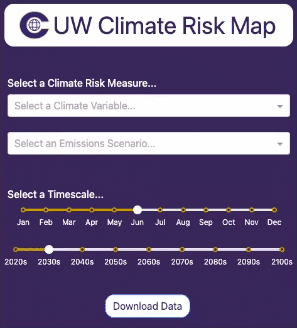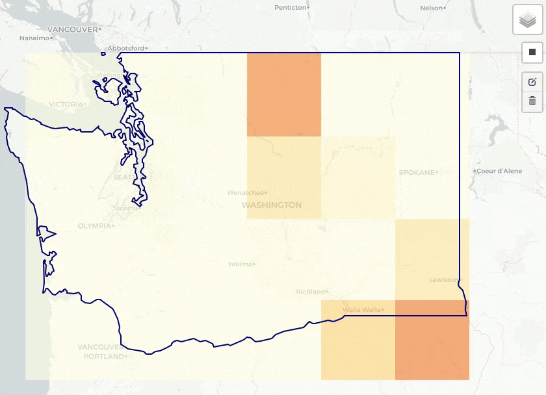CRL Map: Difference between revisions
Jump to navigation
Jump to search
m placeholder for step 2 |
Add infrastructure overlay section |
||
| Line 37: | Line 37: | ||
| style="width:50%; vertical-align:top;" | | | style="width:50%; vertical-align:top;" | | ||
*'''Select Infrastructure Overlays''': On the right-hand side, you'll see a layers icon. Hover over it to reveal the available infrastructure overlays. In this example, the available infrastructure includes specific types of power grid data, which provides insight into its exposure under the selected climate scenario. | |||
| Line 42: | Line 43: | ||
| style="width:50%; vertical-align:top; text-align:center;" | | | style="width:50%; vertical-align:top; text-align:center;" | | ||
<div style="display: flex; justify-content: center;"> | <div style="display: flex; justify-content: center;"> | ||
[[File:CRL- | [[File:CRL-Map-Infrastructure-Overlay-2024-10-7.gif|alt=Dropdown Selectors]] | ||
</div> | </div> | ||
|} | |} | ||
Revision as of 21:50, 7 October 2024
Welcome to the Climate Risk Map! This guide will help you get started with using the tool to understand climate-related hazards and their impacts on physical assets. Whether you're new to climate data or an experienced analyst, this guide will walk you through the basics so you can start exploring climate risk insights right away.

Getting Started
Follow this step-by-step guide for a basic overview of the map functionality. The map can be accessed here.
1. Selecting Climate Scenario Parameters
First, we need to select a combination of parameters for the desired climate scenario.
The example on the right illustrates a scenario where the selected measure is "% Area Covered by Burnt Vegetation"—used as a proxy for wildfire risk—under a moderate emissions projection for August in the 2060s.
|
2. Selecting Infrastructure Overlays
Second, we need to select the specific types of infrastructure we are interested in visualizing.
|

